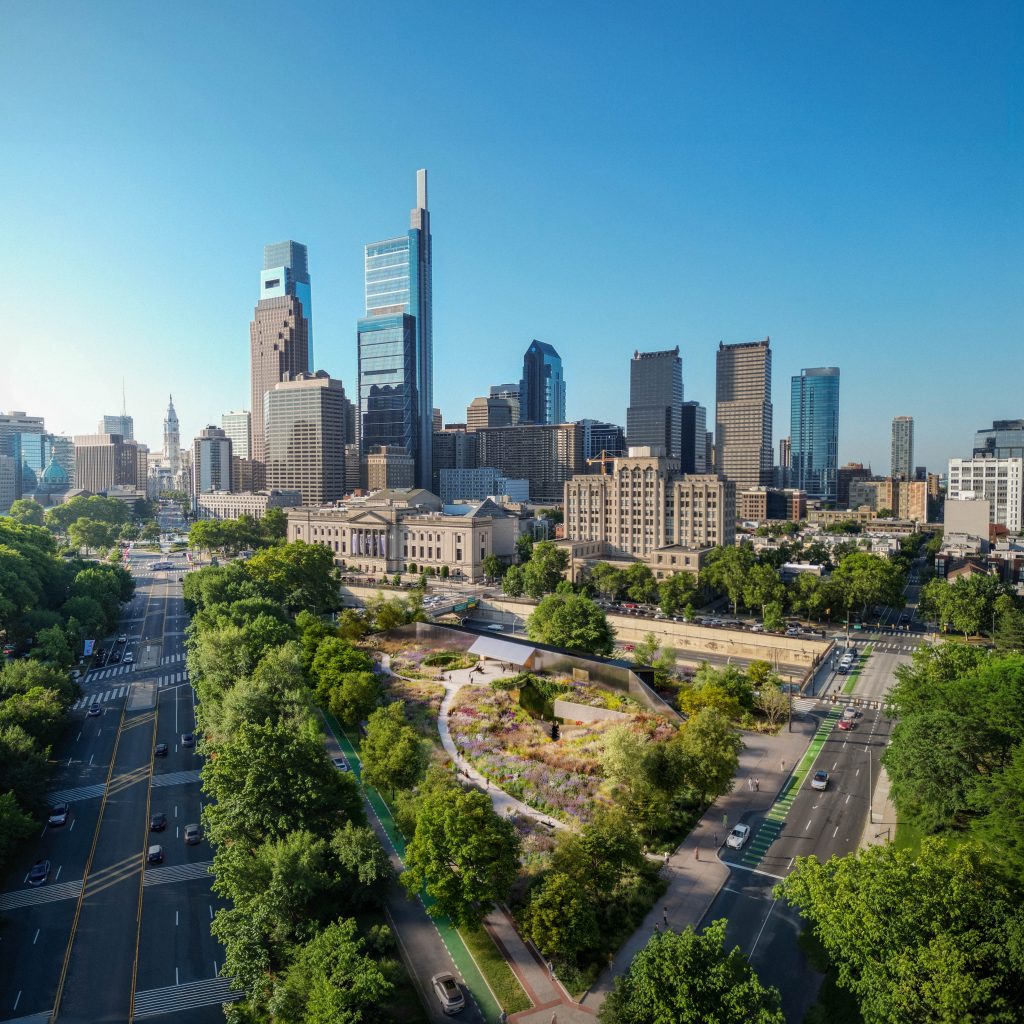
Calder Gardens, Philadelphia’s newest arts attraction on the Benjamin Franklin Parkway, is set to debut to the public on Sept. 21. The space — branded as neither a museum nor a gallery — will house a trove of midcentury sculptor Alexander “Sandy” Calder III’s work.
Set along the Parkway between 21st Street, 22nd Street and the Vine Street Expressway, it will be solely dedicated to Calder’s work, featuring mobiles and a rotating array of other works. A list of works to be displayed is yet to be released.
Visitors to the Philadelphia Museum of Art will be familiar with his “Ghost” mobile, which is set high above Augustus Saint-Gaudens’ golden huntress “Diana” in the Great Hall.
Calder’s works of kinetic art established the contemporary definition of “mobiles.” His mobile sculptures are typically composed of wire and brightly-colored metal forms, carefully balanced and hung. However, the entire piece is free to move and respond to airflow and touch. Many people are exposed to mobiles early in life: they are often found hanging over cribs.
The site will be “open to interpretation” in the fall: it is designed to provoke introspection and to bring nature into the city. It is strikingly low-profile for what is hoped to be a major attraction, with a reflective headhouse set far from the sidewalk behind a meadow, and viewing spaces largely sunken below ground.
The project is a collaboration between world-renowned Swiss architecture firm Herzog & De Meuron, who designed the Tate Modern, and Dutch landscape architect Piet Oudoulf, who designed New York City’s High Line. It experienced construction delays, including for redesigned flood protection systems after the Vine Street Expressway flooded in 2021.
The independent museum will receive logistical and programming support from the Barnes Foundation, located across the parkway.
“The Philly arts and museum scene is already great, but another institution, especially one that honors someone with such deep ties to the city, is more than welcome,” Sarah Fiedorek, a graduating art history and fashion design major, told the Triangle. “I can’t wait to see how the garden celebrates Calder’s work.”
Philadelphia is already home to the world’s largest mobile, also by Calder, though it is sequestered within the Federal Reserve Bank of Philadelphia on Independence Mall. The sculpture will be inaccessible until the bank completes a refresh of its public exhibit, which is expected to open in 2026.
The project represents a long-held ambition of city boosters to attract another world-class arts institution, and a homecoming of sorts for Calder’s works.
Calder was the third in a dynasty of sculptors who shaped Philadelphia’s arts scene. His father, A. Stirling Calder, was responsible for many works of civic art, including the Swann Memorial Fountain (with its beloved frogs) in Logan Square. His grandfather, Alexander Milne Calder, created the 36-foot-tall sculpture of William Penn that sits on top of City Hall’s clock tower.
Timed entry tickets to Calder Gardens are available now through its website. Student admission is available for $5.


